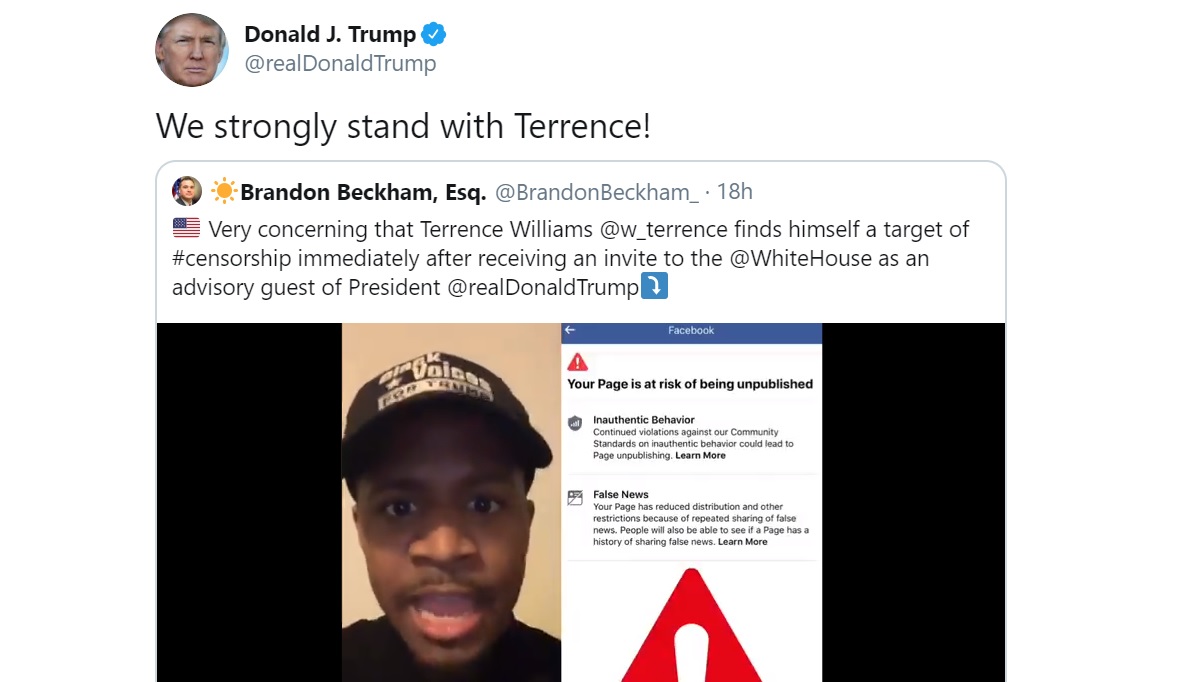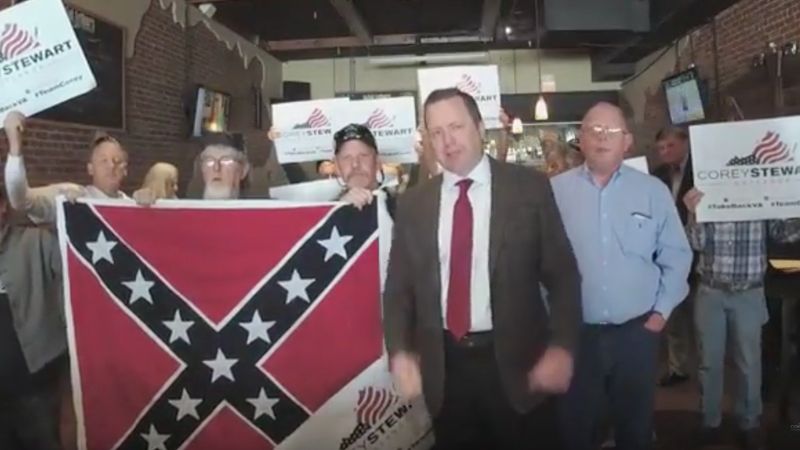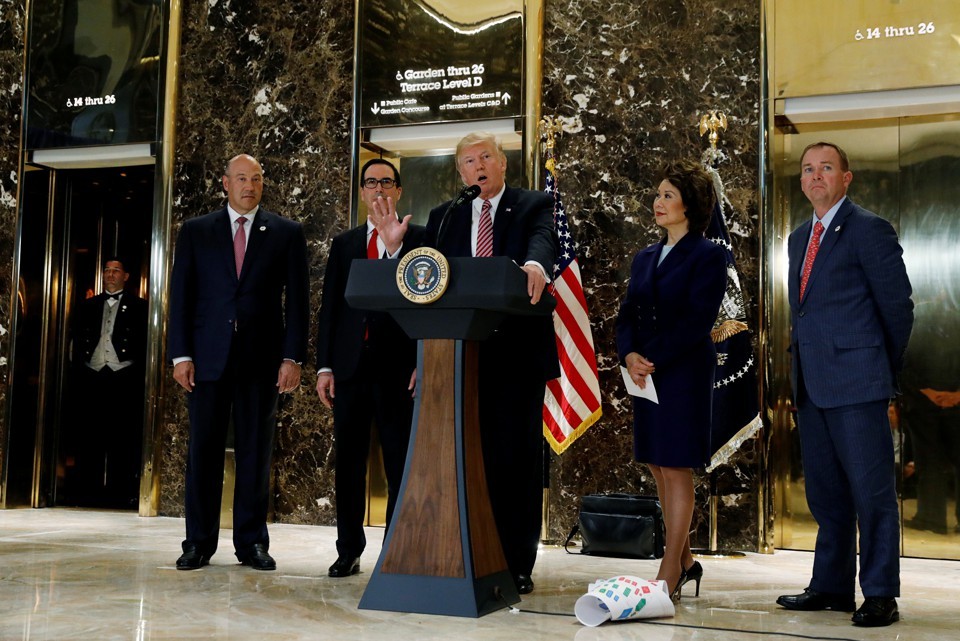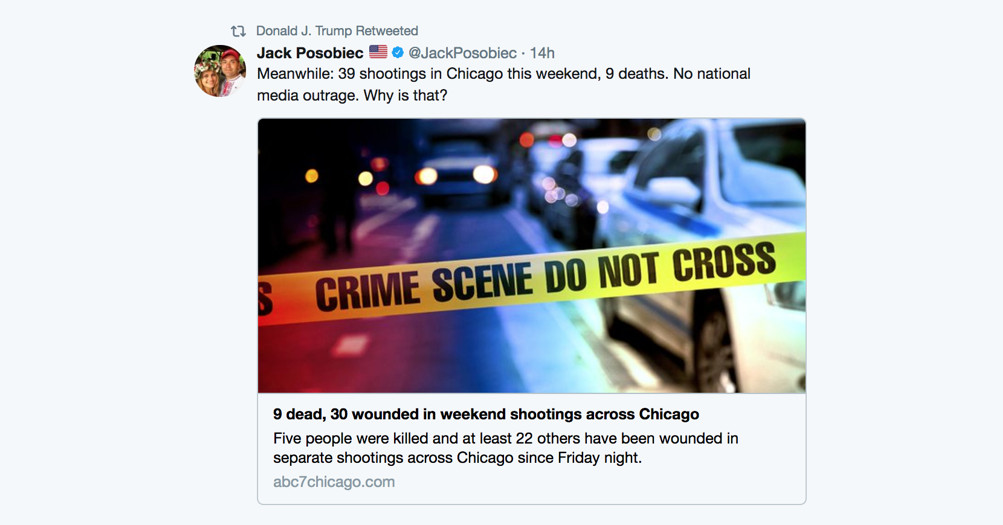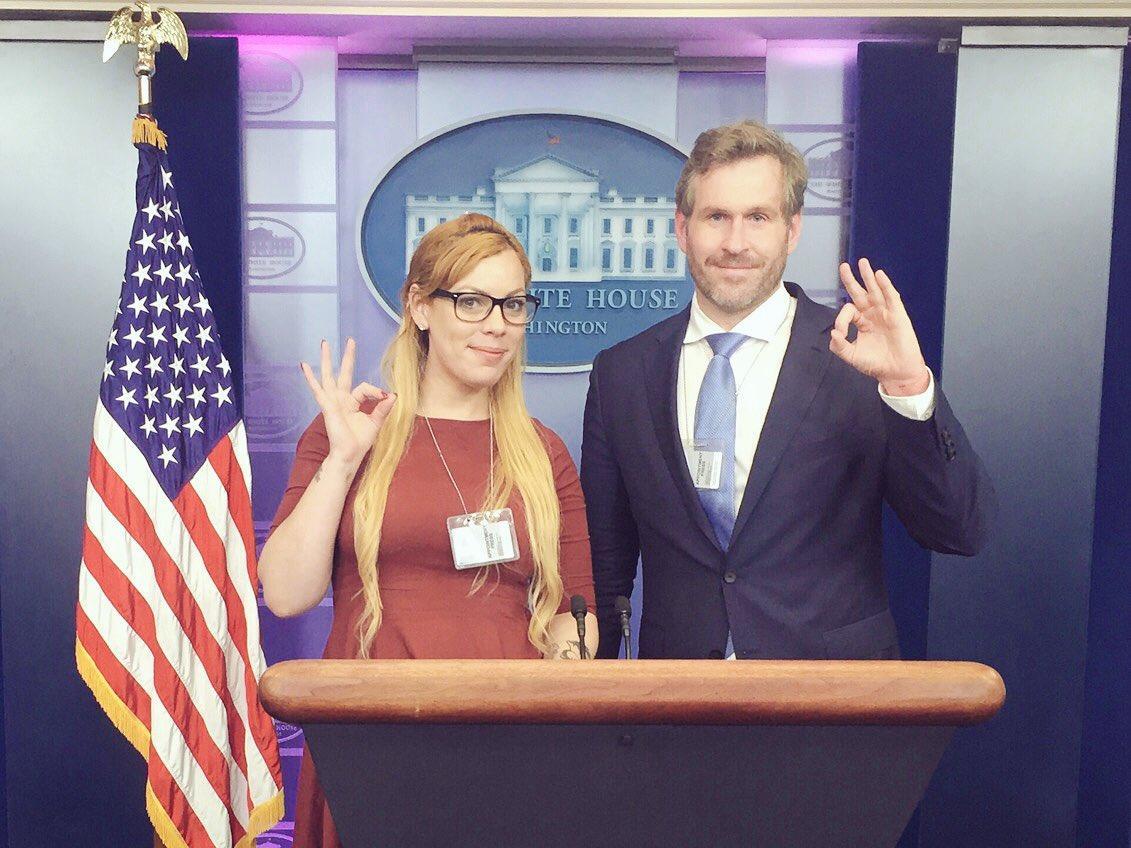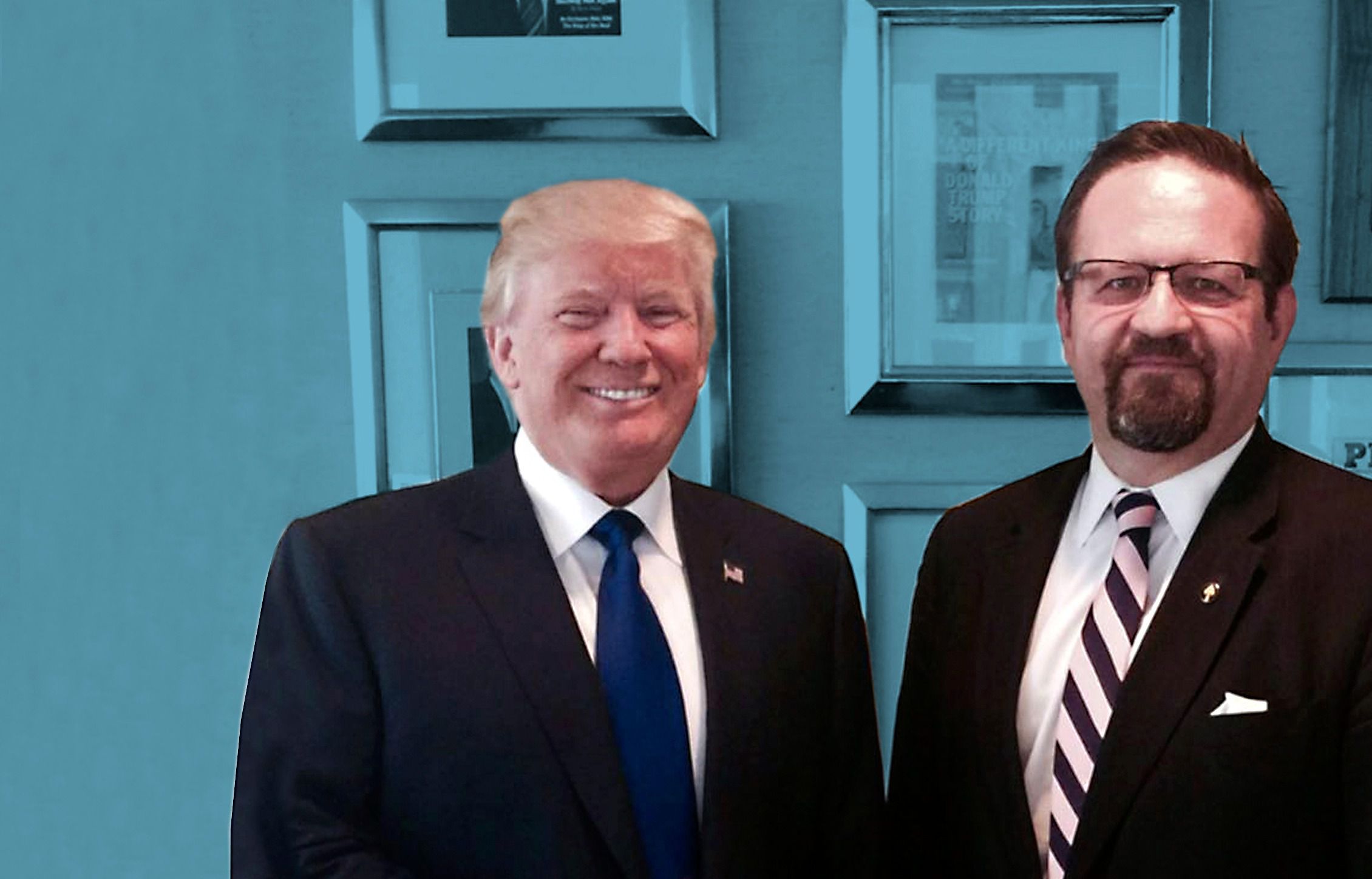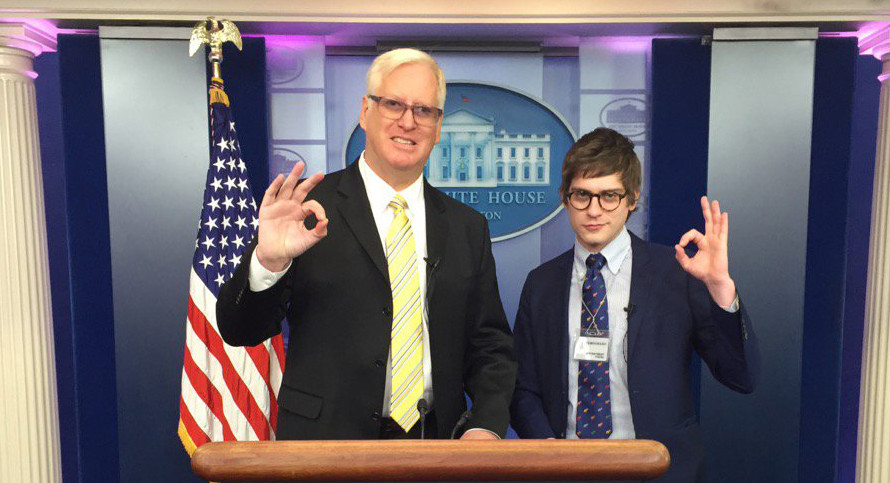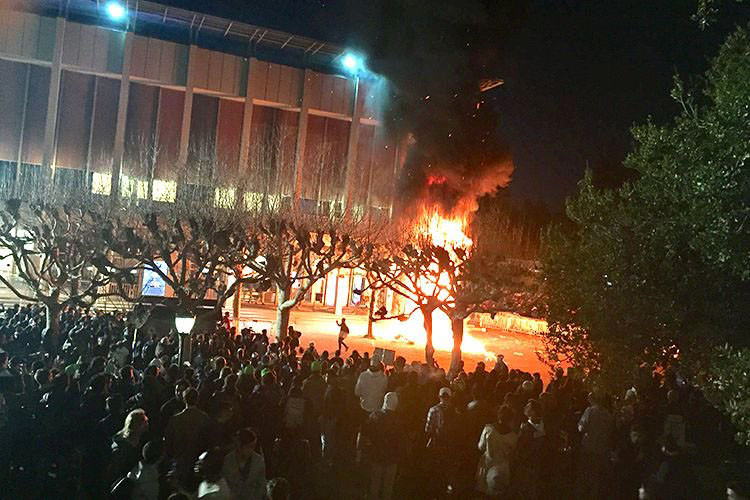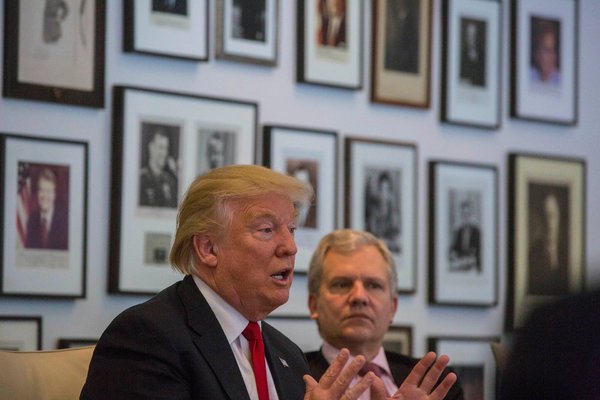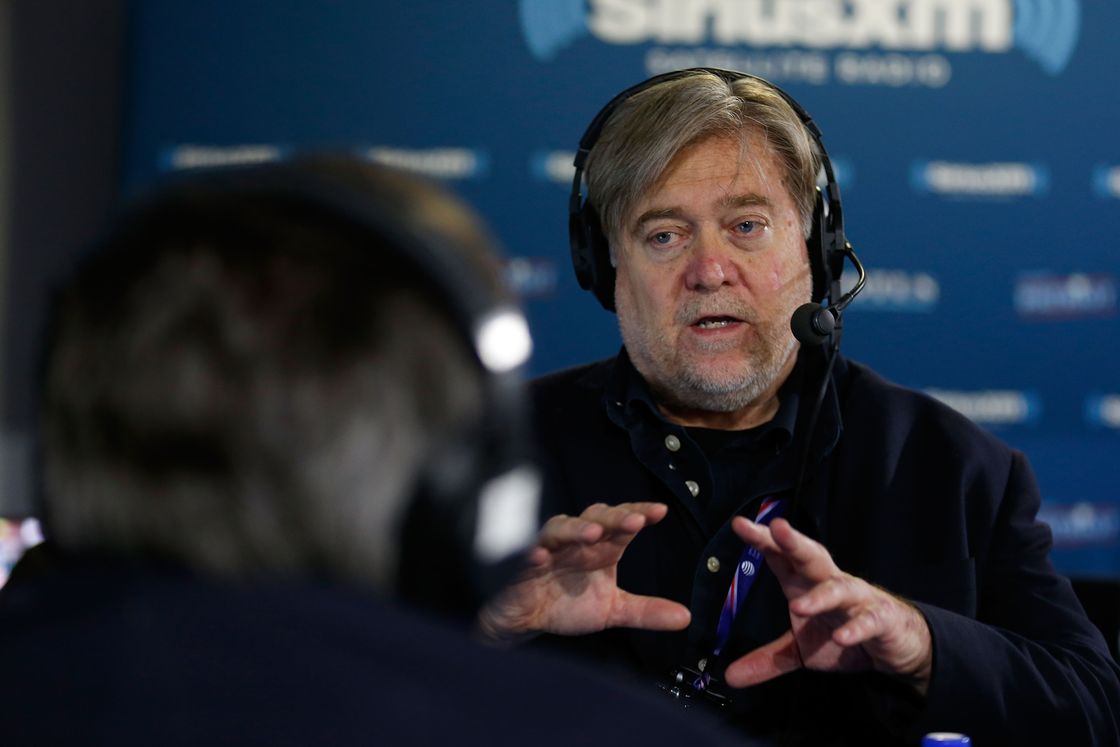hen photographs recently emerged showing Sebastian Gorka, President Donald Trump’s high-profile deputy assistant, wearing a medal associated with the Nazi collaborationist regime that ruled Hungary during World War II, the controversial security strategist was unapologetic.
“I’m a proud American now and I wear that medal now and again,” Gorka told Breitbart News. Gorka, 46, who was born in Britain to Hungarian parents and is now an American citizen, asked rhetorically, “Why? To remind myself of where I came from, what my parents suffered under both the Nazis and the Communists, and to help me in my work today.”
But an investigation by the Forward into Gorka’s activities from 2002 to 2007, while he was active in Hungarian politics and journalism, found that he had close ties then to Hungarian far-right circles, and has in the past chosen to work with openly racist and anti-Semitic groups and public figures.
Gorka’s involvement with the far right includes co-founding a political party with former prominent members of Jobbik, a political party with a well-known history of anti-Semitism; repeatedly publishing articles in a newspaper known for its anti-Semitic and racist content; and attending events with some of Hungary’s most notorious extreme-right figures.
When Gorka was asked — in an email exchange with the Forward — about the anti-Semitic records of some of the groups and individuals he has worked with, he instead pivoted to talk about his family’s history.
“My parents, as children, lived through the nightmare of WWII and the horrors of the Nyilas puppet fascist regime,” he said, referring to the Arrow Cross regime that took over Hungary near the very end of World War II and murdered thousands of Jews.
In the United States, Gorka, who was appointed deputy assistant to the president on January 20, is known as a television commentator, a professor and an “alt-right” writer who describes himself as a counterterrorism expert. A close associate of Stephen Bannon, Trump’s chief strategist, Gorka is now part of Bannon’s key in-house White House think tank, the Strategic Initiatives Group. The newly formed group consists of figures close to Trump and is seen by some as a rival to the National Security Council in formulating policies for the president.
Gorka, who views Islam as a religion with an inherent predilection for militancy, has strong supporters among some right-leaning think tanks in Washington. “Dr. Gorka is one of the most knowledgeable, well-read and studied experts on national security that I’ve ever met,” Joseph Humire, executive director of the Center for a Secure Free Society, told the Forward. Humire has known Gorka for nearly a decade, and considers him “top-notch.”
Born in London to parents who fled Hungary’s post-World War II Communist regime, Gorka has had a career that’s marked by frequent job changes and shifting national allegiances. The U.S. government is the third sovereign state to hire him in a national security role. As a young man, he was a member of the United Kingdom’s Territorial Army reserves, where he served in the Intelligence Corps. Then, following the fall of Communism in Hungary, he was employed in 1992 by the country’s Ministry of Defense. He worked there for five years, apparently on issues related to Hungary’s accession to NATO.
Gorka’s marriage in 1996 to an American, Katharine Cornell, an heir to Pennsylvania-based Cornell Iron Works, helped him become a U.S. citizen in 2012.
A Web of Deep Ties to Hungary’s Far Right
It was during his time in Hungary that Gorka developed ties to the country’s anti-Semitic and ultranationalist far right.
During large-scale anti-government demonstrations in Hungary in 2006, Gorka took on an active role, becoming closely involved with a protest group called the Hungarian National Committee (Magyar Nemzeti Bizottság). Gorka took on the roles of translator, press coordinator and adviser for the group.
Among the four Committee members named as the group’s political representatives was László Toroczkai, then head of the 64 Counties Youth Movement. Toroczkai founded that group in 2001 to advocate for the return of parts of modern-day Serbia, Slovakia, Romania and Ukraine to form a Greater Hungary, restoring the country’s pre-World War I borders.
In 2004, two years before the Movement’s involvement in the 2006 protests, Hungarian authorities opened an investigation into the Movement’s newspaper, Magyar Jelen, when an article referred to Jews as “Galician upstarts” and went on to argue: “We should get them out. In fact, we need to take back our country from them, take back our stolen fortunes. After all, these upstarts are sucking on our blood, getting rich off our blood.” At the time of the article’s publication, Toroczkai was both an editor at the paper and the Movement’s official leader.
Toroczkai currently serves as vice president of Jobbik and is the mayor of a village near the border Hungary shares with Serbia. Last year, he gained notoriety in the West for declaring a goal of banning Muslims and gays from his town.
In January 2007, inspired by the 2006 protests and his experience with the Hungarian National Committee, Gorka announced plans to form a new political party, to be known as the New Democratic Coalition. Gorka had previously served as an adviser to Viktor Orbán, now Hungary’s right-wing nationalist prime minister. But following Orbán’s failed attempts to bring down Hungary’s then-Socialist government, Gorka grew disenchanted with Orbán’s Fidesz party.
In his email exchange with the Forward for this article, Gorka explained: “The Coalition was established in direct response to the unhealthy patterns visible at the time in Hungarian conservative politics. It became apparent to me that the effect of decades of Communist dictatorship had taken a deeper toll on civil society than was expected.”
Gorka co-founded his political party with three other politicians. Two of his co-founders, Tamás Molnár and Attila Bégány, were former members of Jobbik. Molnár, a senior Jobbik politician, served as the party’s vice president until shortly before joining Gorka’s new initiative, and was also a member of the Hungarian National Committee during the 2006 protests, issuing statements together with extremist militant figures such as Toroczkai.

Jobbik has a long history of anti-Semitism. In 2006, when Gorka’s political allies were still members of Jobbik, the party’s official online blog included articles such as “The Roots of Jewish Terrorism” and “Where Were the Jews in 1956?”, a reference to the country’s revolution against Soviet rule. In one speech in 2010, Jobbik leader Gabor Vona said that “under communism we licked Moscow’s boots, now we lick Brussels’ and Washington’s and Tel Aviv’s.”
In founding the New Democratic Coalition, Gorka and the former Jobbik politicians aimed to represent “conservative values, decidedly standing up to corruption and bringing Christianity into the Constitution,” according to the party’s original policy program. At the time, Hungary’s constitution was secular.
The party’s founders did not see themselves as far right or anti-Semitic.
“I knew Gorka as a strongly Atlanticist, conservative person,” Molnár, the former Jobbik vice president and co-founder of Gorka’s party, told the Forward in a phone conversation. He added that he could not imagine Gorka having anti-Semitic views.
Molnár first met Gorka at a book launch event for Gorka’s father, Pál Gorka, in 2002. The younger Gorka and Molnár became friends, bonding over their shared interest in the history of Hungary’s 1956 revolution and the fact that both had parents who were jailed under the country’s Communist regime.
Molnár became involved with Jobbik in 2003, in the far-right party’s early days, and quit in 2006. In his words, “Jobbik went in a militant direction that I did not like.”
Gorka rejects the notion that he knew any of his political allies had connections to the far right.
“I only knew Molnár as an artist and Bégány as a former conservative local politician (MDF if I recall),” Gorka wrote in response to a question regarding the Jobbik affiliations of his former party co-founders. “What they did after I left Hungary is not something I followed.” (MDF is an acronym for the Hungarian Democratic Forum, a now-defunct center-right party.)
In fact, both Molnár and Bégány were members of Jobbik before, and not after, they founded the new party with Gorka. Molnár was Jobbik’s high-profile vice president until September 2006, before he, Gorka and Bégány launched the New Democratic Coalition in early 2007.
Gorka appeared at a press conference with Molnár on September 21, 2006 — one day after Molnár resigned his position as Jobbik’s vice president. Gorka was also photographed on September 23, 2006, wearing a badge with the Hungarian National Committee’s logo as he was standing next to Molnár at a podium while Molnár briefed the press on the Committee’s activities. At the time Gorka was making these public appearances with the Hungarian National Committee’s leadership, extreme-right leader Toroczkai was already a top member of the Committee.
Bégány, meanwhile, had indeed been a member of MDF for a time, but in 2005 he joined Jobbik and served formally as a member of Budapest’s District 5 Council representing the far-right party. Bégány’s formal party biography, posted on the Jobbik website in 2006, said it is his “belief that without belonging to the Hungarian nation or to God it is possible to live, but not worth it.” Like Molnár, Bégány left Jobbik only a few months before starting the new party with Gorka.
Molnár, Bégány and the Hungarian National Committee were not Gorka’s only connection to far-right circles. Between 2006 and 2007, Gorka wrote a series of articles in Magyar Demokrata, a newspaper known for publishing the writings of prominent anti-Semitic and racist Hungarian public figures.
The newspaper’s editor-in-chief, András Bencsik, is notorious in Hungary for his own long-standing anti-Semitic views. In 1995, the Hungarian Jewish publication Szombat criticized Bencsik for writing that “the solid capital, which the Jews got after Auschwitz, has run out.” That same year, Szombat noted, Bencsik wrote in Magyar Demokrata, “In Hungary the chief conflict is between national and cosmopolitan aspirations.” In Hungarian society, “cosmopolitan” is generally a code word for Jews.
In December 2004, the U.S. State Department reported bluntly to Congress that, “the weekly newspaper Magyar Demokrata published anti-Semitic articles and featured articles by authors who have denied the Holocaust.”
In the summer of 2007, Bencsik became one of the founders of the Hungarian Guard, a now-banned paramilitary organization known for assaulting and intimidating members of Hungary’s Roma community. The perpetrators in a spate of racially motivated murders of Roma in 2008 and 2009 were found to have connections to the Guard.
Gorka’s articles for Magyar Demokrata focused not only on decrying Hungary’s then-Socialist government, but also on highlighting the perceived injustices of the Treaty of Versailles, the post-World War I agreement that led to the loss of two-thirds of prewar Hungary’s territory.
“We fought on the wrong side of a war for which we were not responsible, and were punished to an extent that was likely even more unjust — with the exception of the dismemberment of the Ottoman Empire — than any other punishment in the modern age,” Gorka wrote in a 2006 article in Magyar Demokrata.
Asked about his choice of journalistic outlets, Gorka wrote, “I am […] unfamiliar with Bencsik. I believe it was one of his colleagues who asked me if I wanted to write some OpEds.” Gorka told the Forward that his writing at the time shows “how everything I did was in the interests of a more transparent and healthy democracy in Hungary. This included a rejection of all revanchist tendencies and xenophobic cliques.”
Gorka’s claim to be unfamiliar with Bencsik must be weighed against his deep immersion in Hungarian politics and Benscik’s status as a major figure in Hungary’s right-wing political scene. At the time, Gorka gave public interviews as an “expert” on the Hungarian Guard, which Bencsik helped to found. In one 2007 interview, Gorka clarified his own view of the Guard, saying, “It’s not worth talking about banning” the group. Despite its extreme rhetoric against minorities, Gorka said, “The government and media are inflating this question.”
An Affinity for Nationalist Symbols
It was in mid-February that Gorka’s affinity for Hungarian nationalist and far-right ideas first came to the American public’s attention. Eli Clifton of the news website Lobelog noticed from a photograph that the new deputy assistant to the president had appeared at an inauguration ball in January wearing a Hungarian medal known as Vitézi Rend. The medal signifies a knightly order of merit founded in 1920 by Admiral Miklos Horthy, Hungary’s longtime anti-Semitic ruler and Hitler’s ally during World War II. Notwithstanding this alliance, and the group’s designation as Nazi-collaborators by the U.S. State Department, many within Hungary’s right revere Horthy for his staunch nationalism during the overall course of his rule from 1920 to 1944.
Breitbart, the “alt-right” publication, where Gorka himself served as national security editor prior to joining the White House staff, defended his wardrobe choice, writing on February 14 that, “as any of his Breitbart News colleagues could testify, Gorka is not only pro-Israel but ‘pro-Jewish,’ and defends both against the threat of radical Islamic terrorism.”
“In 1979 my father was awarded a declaration for his resistance to a dictatorship, and although he passed away 14 years ago, I wear that medal in remembrance of what my family went through and what it represents today, to me, as an American,” Gorka told Breibart on February 15, as the controversy regarding his choice to wear a Horthy-era medal intensified.
But the medal was not the first time Gorka expressed appreciation for symbols that many associate with Hungary’s World War II-era Nazi sympathizers. In 2006, Gorka defended the use of the Arpad flag, which Hungary’s murderous Arrow Cross Party used as their symbol. The Hungarian Arrow Cross Party killed thousands of Jews during World War II, shooting many of them alongside the Danube River and throwing them into the water. Gorka told the news agency JTA at the time that “if you say eight centuries of history can be eradicated by 18 months of fascist distortion of symbols, you’re losing historic perspective.”
Gorka’s Unlikely Transformation
After the failure of his new party in 2007, Gorka moved to the United States and over the past 10 years has worked for the Department of Justice, Marine Corps University, National Defense University, and Joint Special Operations University.
Former colleagues in the States questioned the quality of Gorka’s work on Islam, and said that he shied away from publishing in peer-reviewed journals, according to the Washington Post.
Retired Lt. Col. Mike Lewis told the Post that when Gorka was lecturing to members of the armed forces, he “made a difficult and complex situation simple and confirmed the officers’ prejudices and assumptions.”
But Humire, of the Center for a Secure Free Society, defended Gorka’s worldview. “Since I’ve known him he has been emphasizing a point that is not properly understood by most conventional counterterrorism experts,” said Humire, “that the modern battlefield is fought with words, images, and ideas, not just bombs and bullets. If you study asymmetric war, this emphasizes the mental battle of attrition and the moral battle of legitimacy over the physical battle for the terrain. Dr. Gorka understands this at a very high level and has taught this to our war fighters for several years,” said Humire.
Over the past few weeks, Gorka has become an informal spokesman for the White House, appearing on radio and television shows to defend Trump’s rhetoric and policy choices — including those that are relevant to the Jewish community.
Asked during a February 6 talk show to acknowledge that it was “questionable” for the White House to leave out any specific mention of Jews as the Nazis’ target in its Holocaust Remembrance Day statement, which referred only to “innocent people” being victimized, Gorka called the criticism “asinine”.
“No, I’m not going to admit it,” he said. “It’s absurd. You’re making a statement about the Holocaust. Of course it’s about the Holocaust because that’s what the statement’s about. It’s only reasonable to twist it if your objective is to attack the president.”
It remains unclear whether the White House ever took a deep look into Gorka’s activities in Hungary. Six White House staffers have reportedly been dismissed for failing FBI background checks; Gorka was not among them.
In 2002, Hungary’s intelligence service denied Gorka a security clearance. Gorka was nominated by the right-wing Fidesz party as its candidate to be an expert in an investigation into allegations that then-Prime Minister Péter Medgyessy had served as a counterintelligence officer during the Communist era. At the time, Gorka’s earlier ties to British intelligence were considered a concern, and he was ultimately not allowed to take part in the investigation.
Gorka’s friends and close associates in the United States do not believe that he is ideologically part of Hungary’s far right.
“I am pretty certain that SG [Sebastian Gorka] has some major differences with aspects of what you call the far-right,” Alejandro Chafuen, who has known Gorka for nearly two decades, wrote the Forward in an email exchange. However, Chafuen, who serves as president of the U.S.-based Atlas Network, added that he does not know whether these ideological differences also include Gorka’s perspective on minority issues and historical memory.
Meanwhile, Gorka’s former political partners in Hungary are pleased with his successes in Washington.
“I am happy, because this could be good for Hungarian-American relations,” said Molnár, the former Jobbik vice president and co-founder of Gorka’s short-lived party, in his conversation with the Forward. “But I was surprised…No Hungarian public figure has ever been so close to the White House.”
(h/t Forward)
